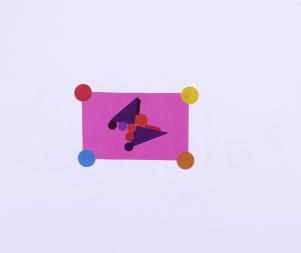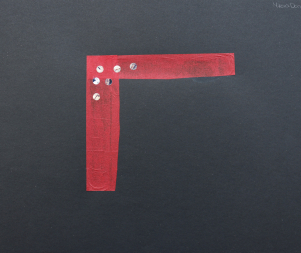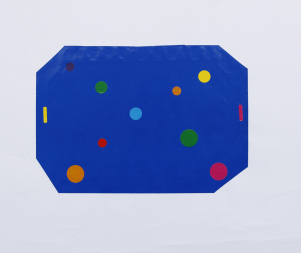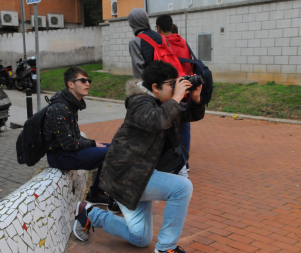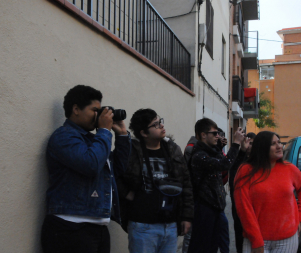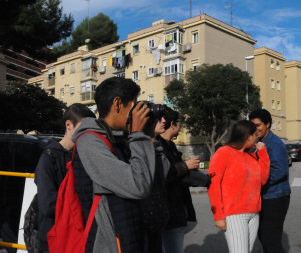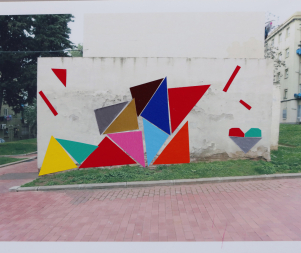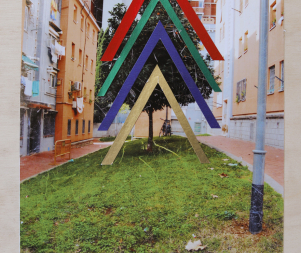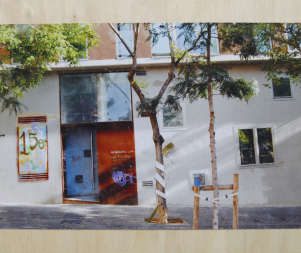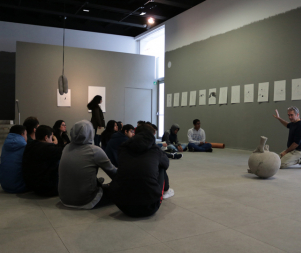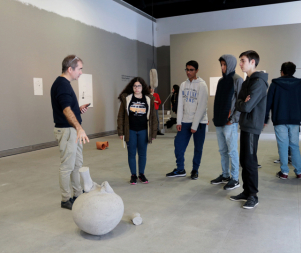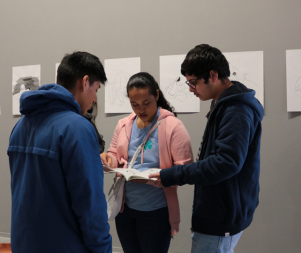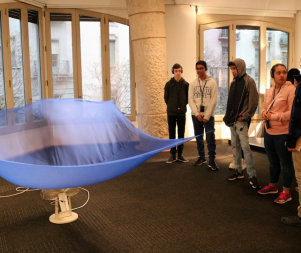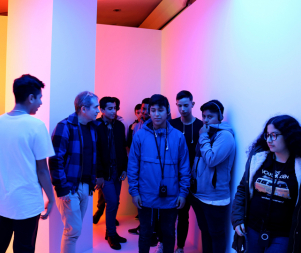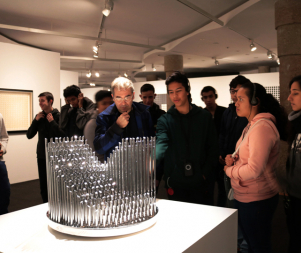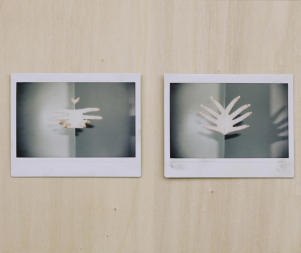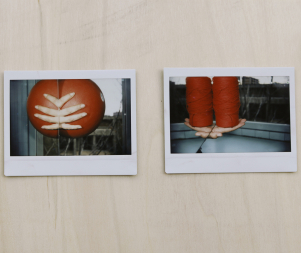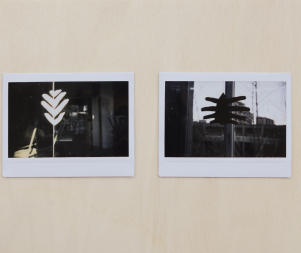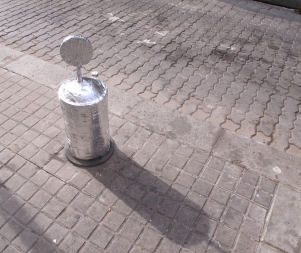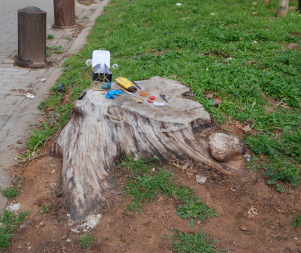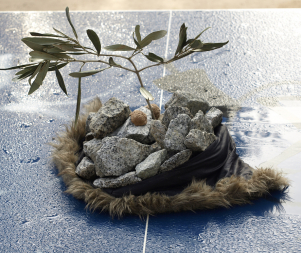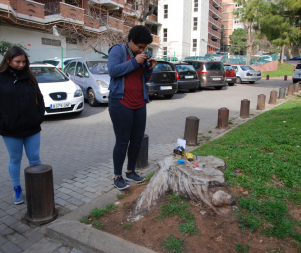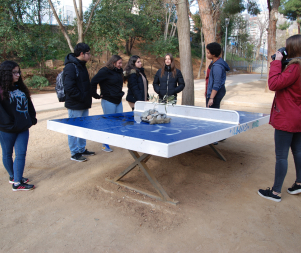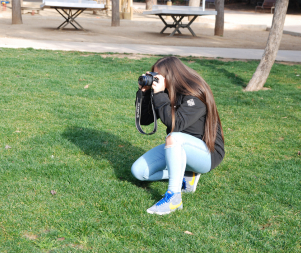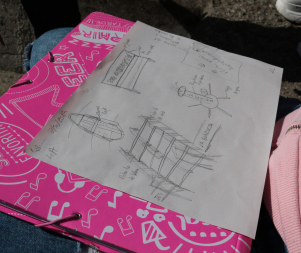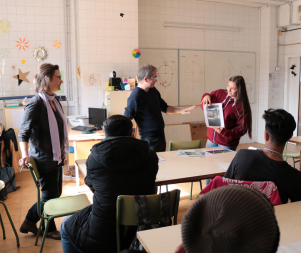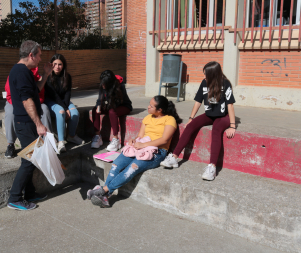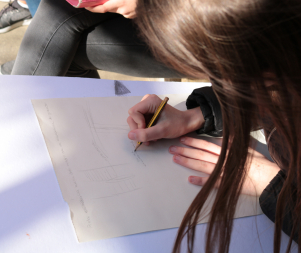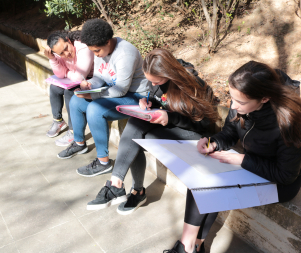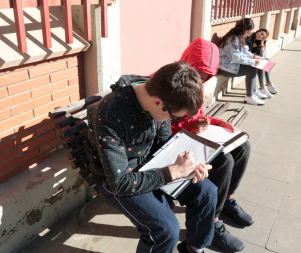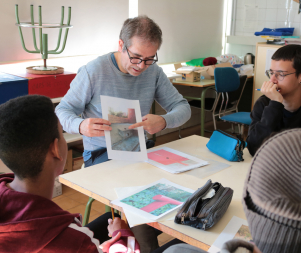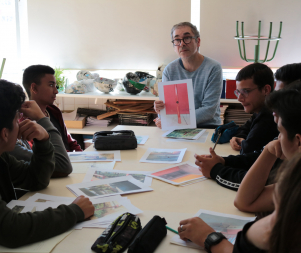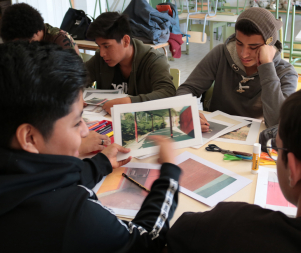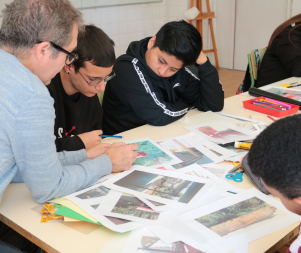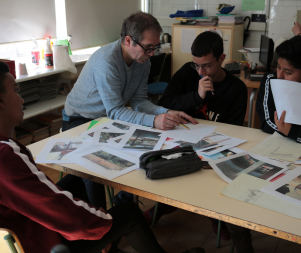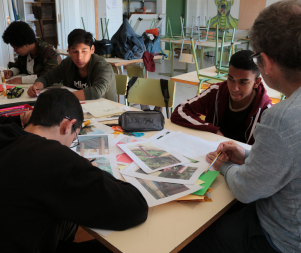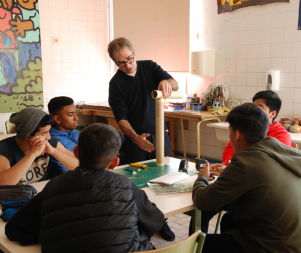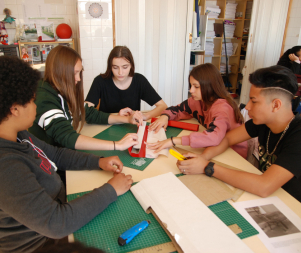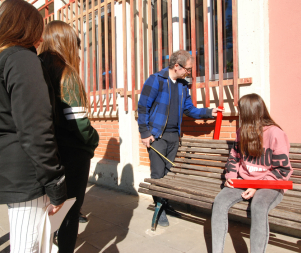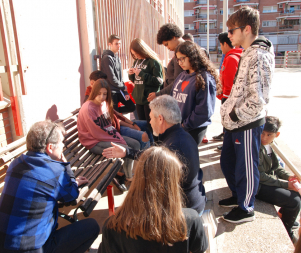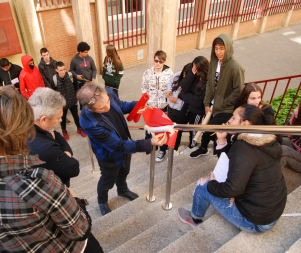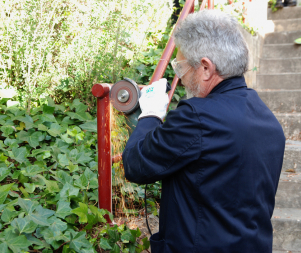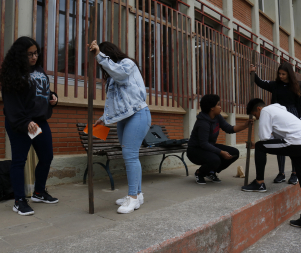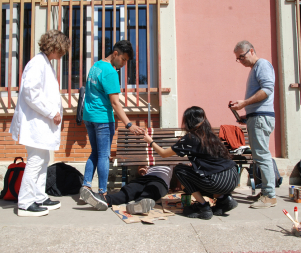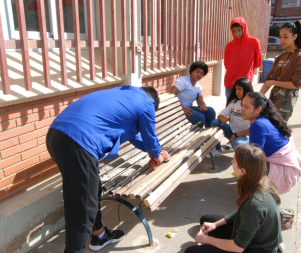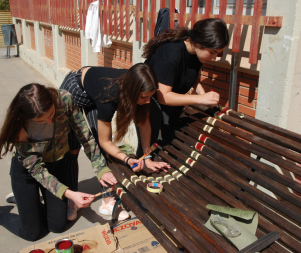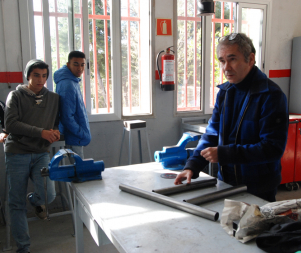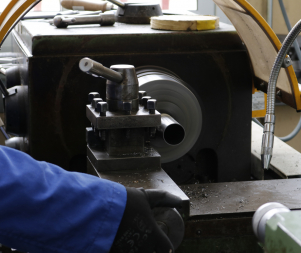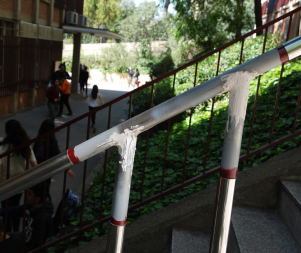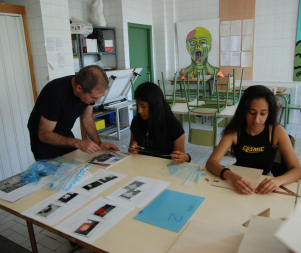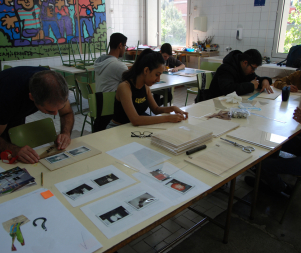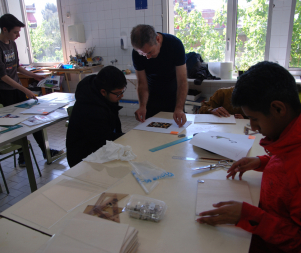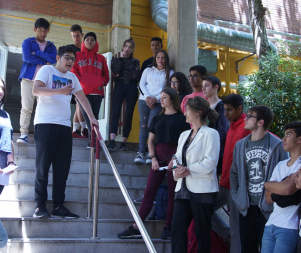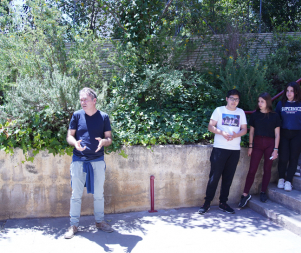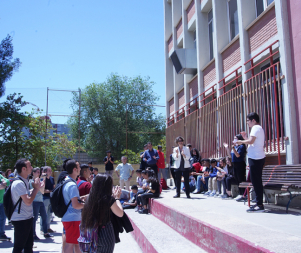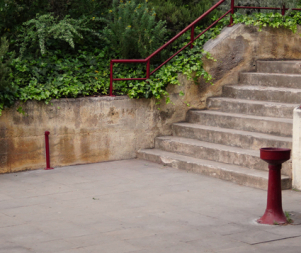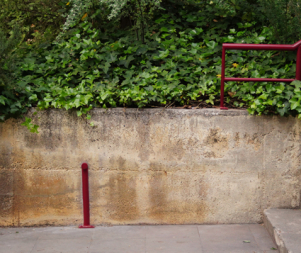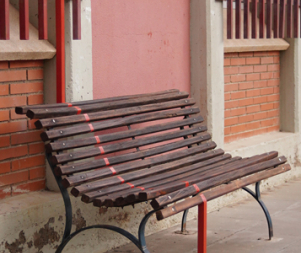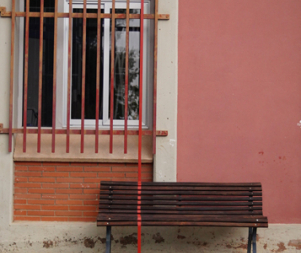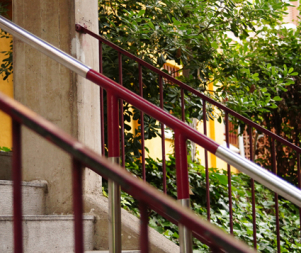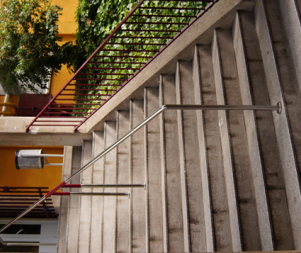- 14th EDITION 2022 / 2023
- 13th EDITION 2021 / 2022
- 12th EDITION 2020 / 2021
- 11th EDITION 2019 / 2020
- 10th EDITION 2018 / 2019
- 9th EDITION 2017 / 2018
- 8th EDITION 2016 / 2017
- 7th EDITION 2015 / 2016
- 6th EDITION 2014 / 2015
- 5th EDITION 2013 / 2014
- 4th EDITION 2012 / 2013
- 3rd EDITION 2011 / 2012
- 2nd EDITION 2010 / 2011
- 1st EDITION 2009 / 2010
Alberto Peral IN RESiDENCE at the School la Guineueta
First sessions: working from small gestures
Joint work began over the course of the first sessions, based on very simple materials and gestures. After learning about various key figures such as Paul Klee, Josef Albers, Piet Mondrian and Richard Tuttle, the students experimented with collage on paper, using coloured paper and magazine cuttings.
Photographic trips to the neighbourhood
The first explorations took place in the neighbourhood. A few trips were organised for taking photos of the surroundings, based on a number of work parameters: Architecture/symmetry, natural/artificial and architectures / curious objects. Adopting these work areas, the students were divided up into work groups with reflex cameras.
Planning: new work proposals based on collages
The collage work went ahead, based on the printed photos that had been taken in the neighbourhood. The photographs, now printed in DIN A4 format, were the starting point for producing small-intervention projects in public spaces. The students investigated this work mode, as it enabled the group to share ideas and proposals that arose from individual work.
Visit to the Suñol i la Pedrera Foundation’s exhibitions
Before the first term had ended, a double trip was organised for visiting two very different exhibitions. This gave the students, the teacher and the creator an opportunity to comment on the works and the artistic proposals while questioning the origins, motives and nature of each proposal.
Experiments with Polaroid
Bringing continuity to the photographic work, an experimental work project was explored using Polaroid and perception-distorting mirrors. All the students worked on this throughout the course as a kind of parallel research. The resulting pieces ended up on display in the final presentation.
Explorations and subtle interventions in the neighbourhood
Alberto Peral asked students to once again divide themselves into groups to explore the neighbourhood while carrying out small interventions in public spaces. One group photographed spaces intervened with a colour, doing this with adhesive tape. A second group carried out interventions in the space with elements taken from that place which they arranged differently. A third group thought about subtle interventions in the urban furniture around the school to change the way people looked at it and moved about.
Discovering Alberto Peral’s work
At the start of the second term, Alberto Peral offered a journey through his own and other authors’ works, which prompted people to make inspiring suggestions for the shared work project: small gestures, changes in the space or subtle interventions that created small oddities in the most everyday of environments. Authors such as Luis Bisbe, Gabriel Orozco and Gordon Matta-Clark were discovered, in addition to works by Alberto Peral himself.
Subtle interventions at the school
Reprising the exploratory work in the neighbourhood, the students began to explore the spaces in the school. In the sessions, they worked on sketches to outline ideas for possible interventions, and pool them, sharing the ideas, difficulties and intentions.
Interventions on photographs
Onto printed photographs of some of the spaces within the school that they had previously worked on, the students sketched the ideas that had come up in earlier explorations. This process of specifying which proposals would be carried out in spaces within the school involved discarding and choosing proposals according to their sense, feasibility and location.
Link to CFGS d’Automoció
Once an initial idea of the interventions had been achieved, possible techniques were then explored. The interventions relied on support from the teacher David Ustrell, from the Automoció de CFGS module.
Designing and measuring
After the first meeting with Automoció, a second stage for specifying the pieces began; models were made and measurements were taken of each of the spaces. This was the point of the process where real needs were detected: materials required, technical complexities, organising the work into groups...
The interventions: cutting, filing, soldering, painting...
The three interventions would be carried out following the colour scheme of the schools rails and railings. At the same time, all three were subtle interventions that alter the perspective of anyone who passes through the space with a poetic intention, inviting estrangement.
Work began on constructing the vertical section of a rail, separating part of it and putting it back in a nearby space. At the same time, they prepared the bench where the second of the interventions would be placed, a prolonged line of one of the bars of a railing. In this case the benches had previously required repair: filing, painting and soldering.
Work for installing the pieces
The third piece was technically the most complex: it simulated a vein that connected two rails along the steps leading down to the courtyard. Considerable rigour and accuracy were required for the installation.
Assembling the exhibition
The proposal, for the project’s presentation, was to show part of the previous work, the collages and Polaroid work. Alberto Peral proposed a temporary assembly with magnets on the pillars in the courtyard, which also guided us from some interventions to the others.
Presentation
The “Encarnado” project was presented on 31 May. Students, teachers and the creator explained the process of the entire course to 4th-year compulsory secondary school (ESO) students, teachers and the other attendees.
Pieces
The interventions carried out remain in place at the school, signposted with a poster.

